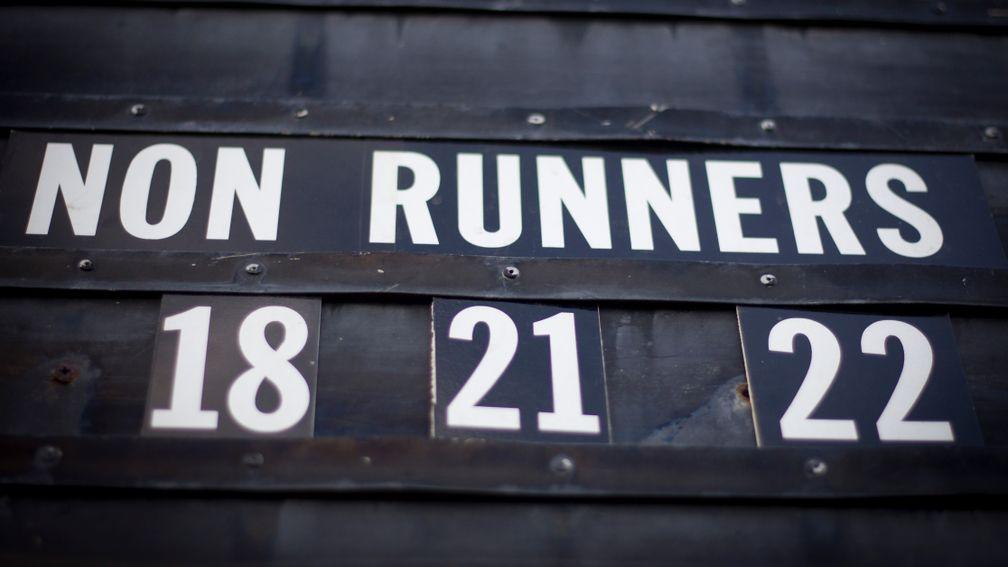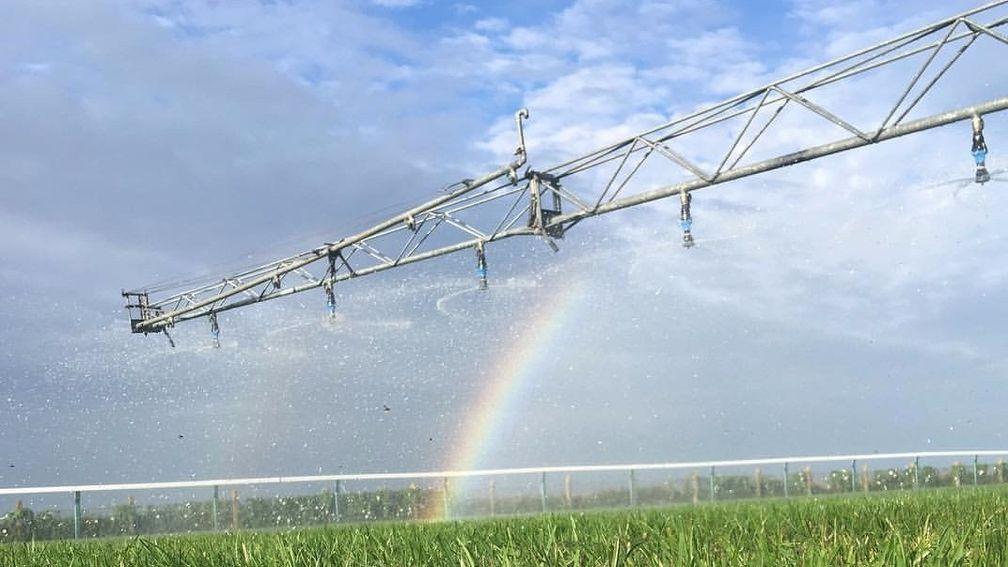The ground explained: glossary of the going part two

Non-runners The most visible sign of a problem with the official going description, especially since the advent of 48-hour declarations on the Flat. Often prompted by a breakdown in meteorological communication – the clerk prayed for rain, those prayers were ignored, or vice-versa – the subsequent devastation of the racecard is bad news for racegoers and punters alike.
Our little friends Now and again nature takes its course and messes around with it. In the last few years both Goodwood and Chepstow have suffered with insect infestation, the bugs burrowing beneath the surface, laying eggs, and when hatching time comes the new arrivals have tasty grass roots to eat. This makes the turf unstable and unsafe and means meetings are cancelled while the affected areas are treated.
Perfection According to the vastly experienced Seamus Buckley, clerk of the course at Goodwood, going-related nirvana is certainly attainable. “The perfect Flat racing conditions are good to firm with a little moisture and a grass length of around four inches,” he said in an interview with the slightly Have I Got News For You-style magazine Pitchcare (serving the turfcare industry).
Quick Another term for good to firm ground. Look, Q isn’t easy, all right?
Rain The great imponderable. If it’s forecast, will it arrive? If it does, will it arrive at the predicted time, and will it arrive in the quantities suggested? Given Britain’s status as an island nation, and thus more prone to the vagaries of the weather than our continental brethren, placing too much faith in the forecast is regularly a recipe for disaster, although the dark science of meteorology has improved greatly from the days when seaweed, cows lying down in fields and chickens’ entrails were components of the forecaster’s kit. The time between declaration and the morning of the race is the most nervy for any clerk, when any best-laid plans can either be hung out to dry or washed away, depending on what happens. A useful rule of thumb might be ‘if you’ve watered, it will rain, if you haven’t watered, it won’t’. Never offer a clerk of the course a drink and then ask if he/she would like water with it; the near-Pavlovian response to the slightest mention of H2O may be unseemly.
Speed figures Can be a more reliable assessment of the state of the going than the official description or that offered by jockeys. If horses are regularly recording times that correspond to good going, when the official description is soft, then there is every reason to believe the clock is providing greater accuracy than the clerk. A recent example is the mindblowing performance at Royal Ascot of Lady Aurelia, who was timed at 60.14sec on ground described as soft – experienced slaves of the stopwatch considered that to be highly unlikely, and were of the opinion the ground was riding somewhat faster.
Treaders There is always evidence that a group of horses has passed this way, and so the role of the ‘treader-in’ is vital to racecourse husbandry. It’s a low-tech method, but there is no better way to replace the torn-up surface and fill in divots than by employing people wearing sturdy footwear to slowly and carefully walk the course and do the job manually. This is done to an extent between races, but more thoroughly after racing or the following morning.
Undersoil heating It would be the solution to many of racecourses’ winter-weather problems, but the sheer area involved and the cost – and the requirement to decompact the surface from time to time – makes it a non-starter. The necessarily shallow installation of the pipes would also be vulnerable to the incessant pounding and indentations made by all those galloping hooves.
Variations The gradations of going descriptions in Britain and Ireland – firm, good to firm, good, good to soft (see Yielding), soft, heavy – do not correspond with those used in other racing jurisdictions. In Australia, where the sun always shines, they utilise a ten-point system that ranges from Firm 1 to Heavy 10. In the US, the going descriptions for dirt racing are as follows: fast, good, muddy, sloppy (where horses splash through a saturated surface), slow and sealed (a surface that has been packed down to prevent absorption of water). On turf, descriptions are similar to those in Britain and Ireland, although there can be a world of difference between, say, ‘American soft ground’ and ‘Irish soft ground’.

Watering The method by which clerks of the course try to maintain good ground (or slightly softer) during prolonged spells of dry weather so as to promote healthy field sizes. The method that forces trainers of horses who need genuinely fast ground to try to maintain their equanimity in the face of frequent disappointment. Watering can take place all around a racecourse or simply in areas deemed necessary, although the decision to turn on the taps can also be the harbinger of a downpour.
X-rated Some going descriptions are much more straightforward than others. Now and again ground and weather conditions (and a pedantic clerk) conspire to produce a going report that inspires more confusion than clarification. For example: Chase course: good to soft, soft in places, heavy on bottom bend; Hurdle course: soft, good to soft in places, heavy patches in back straight, standing water on bottom bend (probably clerk of course’s tears). After the first race, the jockeys will describe the going as ‘soft all round, really’.
Yielding A going description peculiar to Ireland, which essentially equates to the British ‘good to soft’.
Zero The number of times a year when everyone with a stake in the state of the ground – clerks, jockeys, trainers, owners, punters etc – is unanimously happy with the result. The variables surrounding the process – including the requirements of the horses involved – do not provide for overall contentment but, in the majority of cases, a broad level of satisfaction is reached.
Members can read the latest exclusive interviews, news analysis and comment available from 6pm daily on racingpost.com
Published on 25 August 2017inRP Classics
Last updated 18:02, 21 September 2017